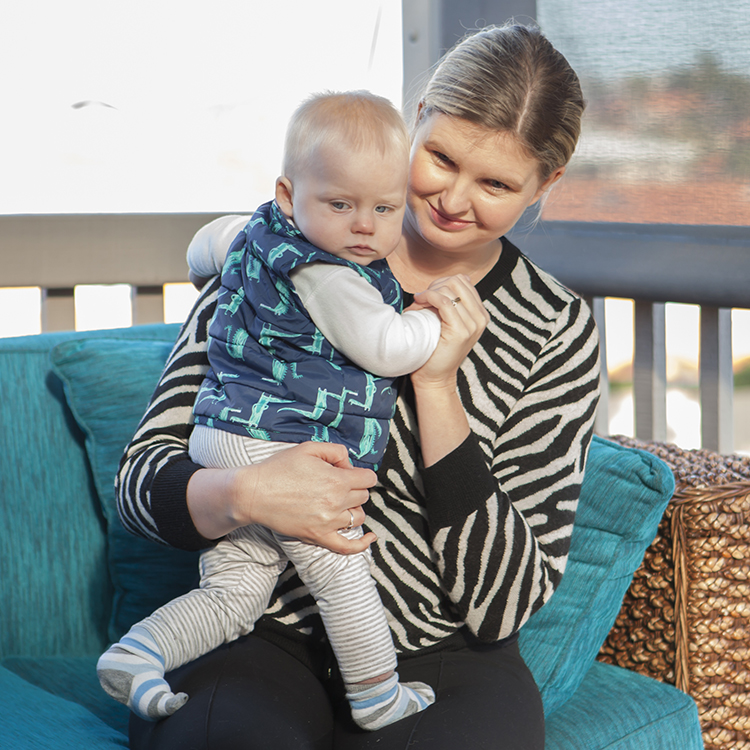Search

News & Events
The Kids Research Institute Australia researchers share in State Government science grantsFour The Kids Research Institute Australia researchers are among those who have received funding in the WA State Government's Merit Award Program announced today.

Epigenomic research at The Kids explores the links between childhood disease and the molecular hallmarks of epigenetic control.
Research
Identifying young adults at high risk of cardiometabolic disease using cluster analysis and the Framingham 30-yr risk scoreCurrent strategies to reduce cardiovascular disease (CVD) risk in young adults are largely limited to those at extremes of risk. In cohort studies we have shown cluster analysis identified a large sub-group of adolescents with multiple risk factors.
Research
Study protocol for a randomised controlled trial evaluating the effect of folic acid supplementation beyond the first trimester on maternal plasma unmetabolised folic acid in late gestationTaking folic acid containing supplements prior to and during early pregnancy reduces the risk of neural tube defects. Neural tube defects occur prior to 28 days postconception, after which, there is no proven benefit of continuing to take folic acid. However, many women continue to take folic acid containing supplements throughout the pregnancy.
Research
A qualitative exploration of motivations and barriers for community leisure organisations’ engagement with the Jooay™ mobile appParticipation in leisure activities is key to the physical and mental health of children and adolescents with disabilities. The Jooay™ mobile app aims to link children and adolescents with disability to participation opportunities in their community.
Research
Time-out for well-being: A mixed methods evaluation of attitudes and likelihood to engage in different types of online emotional well-being programmes in the perinatal periodPositive maternal mental health during the perinatal period contributes to general well-being and positive emotional bonds with the child, encouraging an optimal developmental trajectory. Online interventions to enhance maternal well-being and develop coping skills, such as meditation-based interventions, can be a low-cost way to improve mother and child outcomes.
Research
Oscillometry and spirometry are not interchangeable when assessing the bronchodilator response in children and young adults born pretermThe European Respiratory Society Oscillometry Taskforce identified that clinical correlates of bronchodilator responses are needed to advance oscillometry in clinical practice. The understanding of bronchodilator-induced oscillometry changes in preterm lung disease is poor. Here we describe a comparison of bronchodilator assessments performed using oscillometry and spirometry in a population born very preterm and explore the relationship between bronchodilator-induced changes in respiratory function and clinical outcomes.
Research
Magic Hats and Teddy Bear picnics: Language and visuospatial lateralisation tasks for childrenThe behavioural outcomes associated with atypical cerebral lateralization during the early stages of cognitive development is an interesting research venture. However, there are few tasks for assessing lateralization in young children. The current study describes the Magic Hat task and the Teddy Bear Picnic task, which were designed to measure the lateralization of language and visuospatial attention, respectively, in children as young as three years old.
Research
Population-Modifiable Risk Factors Associated With Childhood Stunting in Sub-Saharan AfricaIdentifying modifiable risk factors associated with childhood stunting in sub-Saharan Africa (SSA) is imperative for the development of evidence-based interventions and to achieve the Sustainable Development Goals. The objective was to evaluate key modifiable risk factors associated with childhood stunting in SSA.
Research
Use of administrative record linkage to examine patterns of universal early childhood health and education service use from birth to Kindergarten (age 4 years) and developmental vulnerability in the Preparatory Year (age 5 years) in Tasmania, AustraliaIn Australia, the health and education sectors provide universal early childhood services for the same population of children. Therefore, there is a strong imperative to view service use and outcomes through a cross-sectoral lens to better understand and address the service needs of young children and their families.
